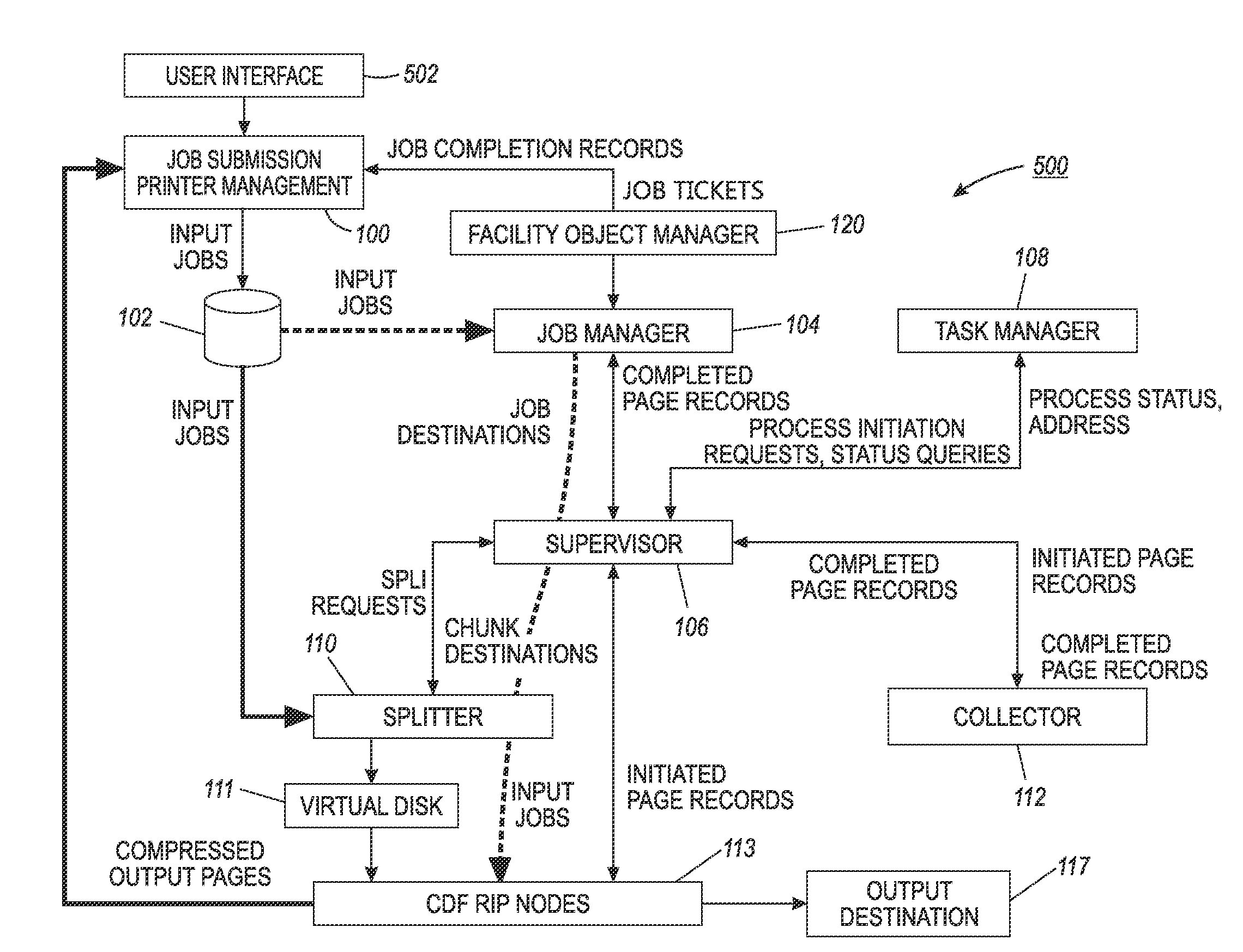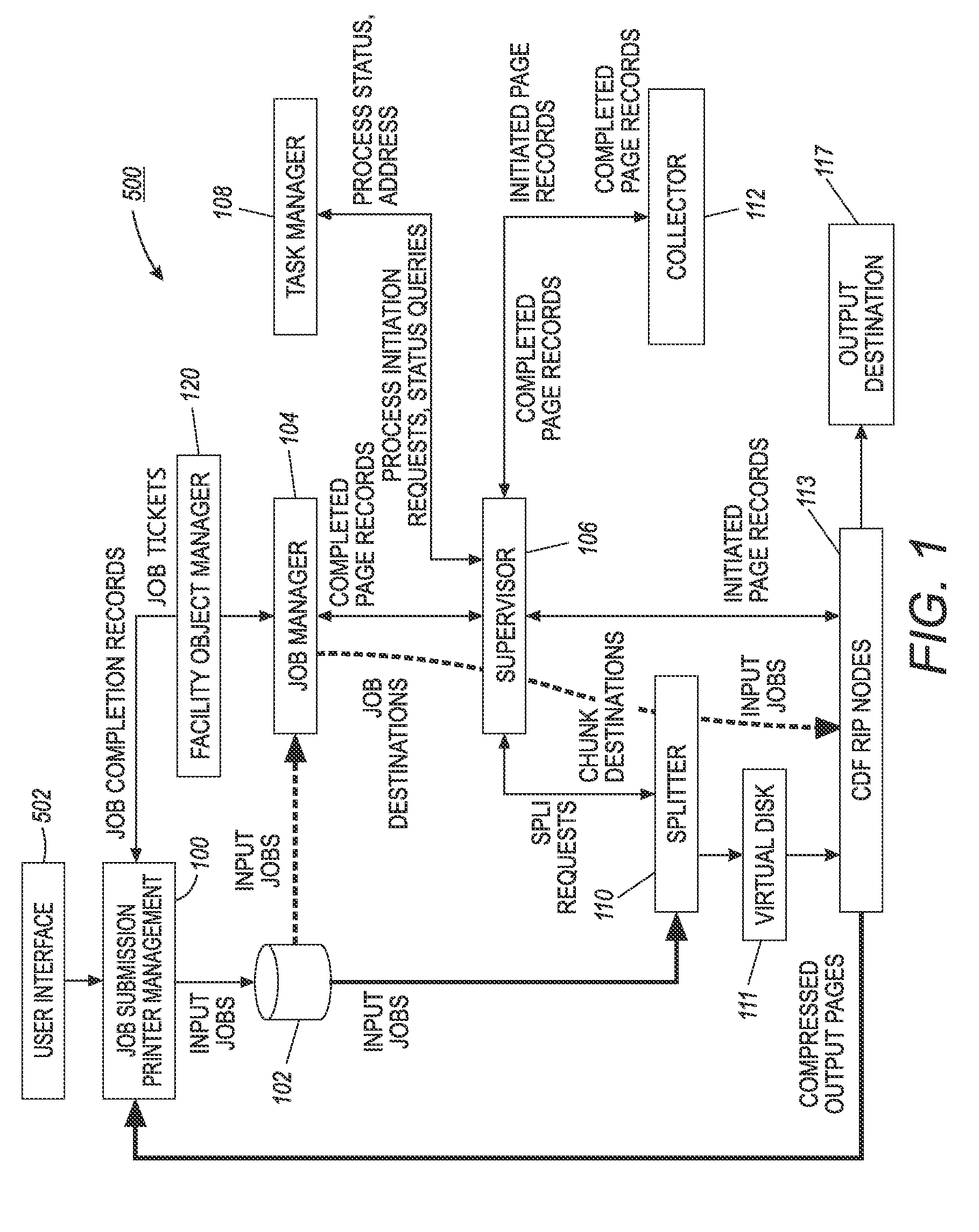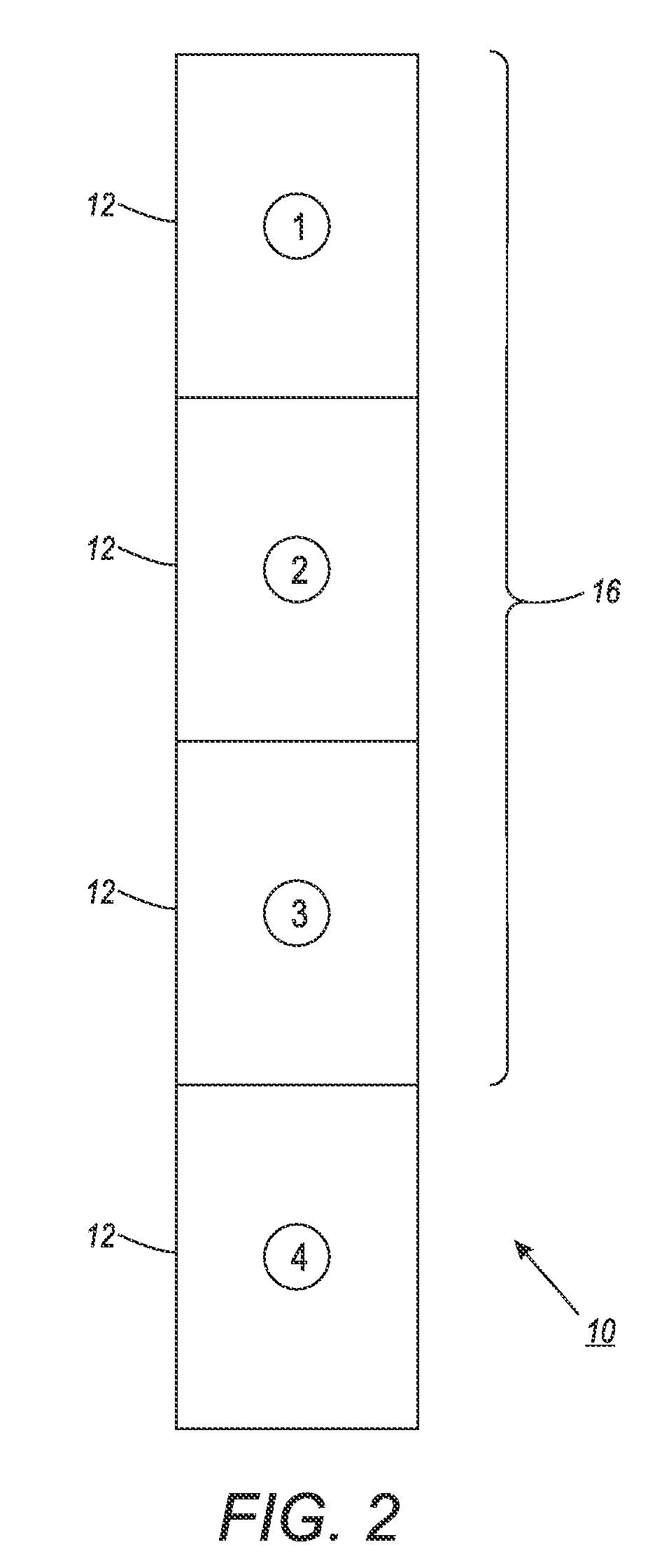Parallel printing system
a printing system and parallel printing technology, applied in the direction of digital output to print units, instruments, visual presentations, etc., can solve the problems of limiting the speed of processors, and optimizing software and using faster and more expensive processors
- Summary
- Abstract
- Description
- Claims
- Application Information
AI Technical Summary
Benefits of technology
Problems solved by technology
Method used
Image
Examples
Embodiment Construction
[0021]The present disclosure includes an implementation of parallel document processing, which is referred to as “chunk” parallelism. Chunk parallelism is an intermediate level of parallelism between job parallelism and page parallelism. In a “chunk” processing system, job(s) are taken from a queue and broken down into pages or other divisible “chunks,” with the chunks being sent to multiple RIP processors to be converted in parallel so that individual groups of pages or “chunks” can be output in logical page order (e.g., chunks 1, 2, 3).
[0022]The term “document,” as used in the present disclosure, refers to either a single page or multiple pages that can be represented either as hard copy or in some intermediate electronically stored format for later rendering to a human understandable form such as hard copy or video display. The term “print job,” as used in the present disclosure, refers to one or more documents or sets of documents being sent to or received by a particular addres...
PUM
 Login to View More
Login to View More Abstract
Description
Claims
Application Information
 Login to View More
Login to View More - R&D
- Intellectual Property
- Life Sciences
- Materials
- Tech Scout
- Unparalleled Data Quality
- Higher Quality Content
- 60% Fewer Hallucinations
Browse by: Latest US Patents, China's latest patents, Technical Efficacy Thesaurus, Application Domain, Technology Topic, Popular Technical Reports.
© 2025 PatSnap. All rights reserved.Legal|Privacy policy|Modern Slavery Act Transparency Statement|Sitemap|About US| Contact US: help@patsnap.com



